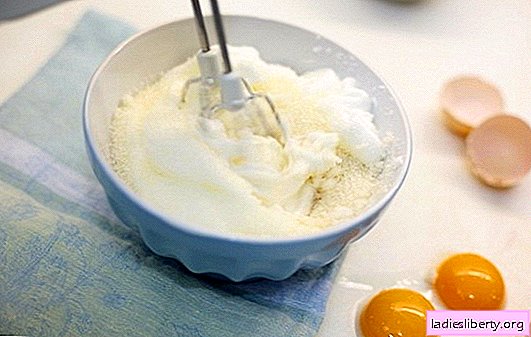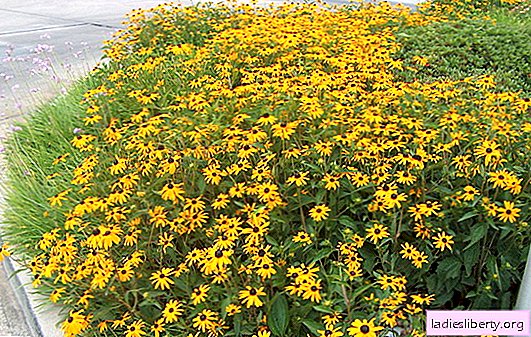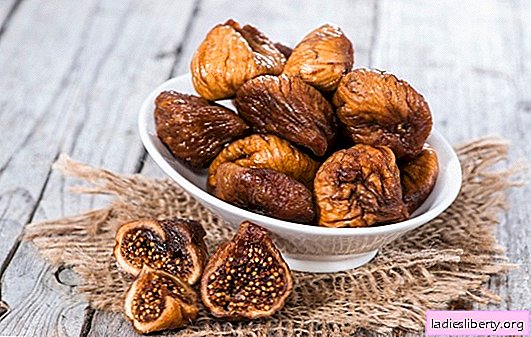
A lot of effort must be made to get a crop of berries and fruits.
A man is working, he is laboring, and there are plenty of people who want to feast on the fruits he has grown.
This is leaf-eating pests, and sucking, and a glass-box, eating the core of the branches.
A disease! At first glance, and you can’t determine what kind of parasites settled on the plant. Here, for example, a bush of currant.
On red currant

The leaves are nibbled, the berries are wrapped in a dense network of cobwebs. Black-headed light green caterpillars swarm inside. What kind of misfortune? How to understand? On the currant ognevka.
On black currant

Gooseberry moth. Description
Belongs to one of the most harmful and dangerous pests of currant and gooseberry. In the winter, chrysalis pupae spend shallow in the ground, in the spring, turning into butterflies, they begin to lay their eggs in buds, then in flowers, and later on in the ovary. The small caterpillars hatched from the eggs begin to gnaw the flowers and gnaw holes in the ovaries, eating the flesh and seeds in them.
In the middle lane and in the north of Russia, moths are widespread on currants and gooseberries. It greatly harms the plantings of gooseberries and currants. In some years, caterpillars can destroy up to 50% of the crop. But this is not the limit for the fire. It is able to deprive a person of almost all berries (up to 90%).
What is this malicious pest? A small butterfly with a wingspan of up to 3 cm and a body length of 1-1.5 cm. The front pair of wings has a dark gray color. Across them are light stripes, in the middle - a brown spot. Hind wings are fringed, gray-brown. Caterpillars of the moth butterfly are yellowish-white first, then greyish-green, 16-legged.
Butterfly fire

Phases of development of moths on currant
The start of a butterfly’s departure depends on the weather and average daily air temperatures. Usually it coincides with the phase of budding and the beginning of flowering of early varieties of currants.
Five to seven days after departure, the moths lay eggs in flowers. One female can lay up to two hundred eggs. Years of butterflies lasts two to three weeks. The eggs of the ognevka are white, oval, about 0.75 mm in size. The main clutch of the butterfly is produced inside the flowers. In the egg, the future mumps develops in about one week. Newborn caterpillars are whitish-yellowish, two to three millimeters long, with a black head.
Only one caterpillar feeds in one ovary, despite how many eggs have been laid. "Extra" individuals creep into neighboring ovaries.
Hatched caterpillars begin to devour seeds and berries, wrapping them in cobwebs. Each of them eats up to fifteen berries of currant or 5-7 - gooseberries. The color of the adult caterpillars is bright green, the head is black. In length they reach 18 mm.
Caterpillar

The longevity of the moths in the form of caterpillars before pupation is different and depends on the weather and the type of plant - "feeders". On gooseberries, development is faster. On blackcurrant, the growth of caterpillars drags on for a week and a half and lasts 22-30 days.
Each individual, having completed the next stage of development, descends on the cobweb to the ground, goes deeper by 5-6 cm and pupates. Pupa pupae are located on 5-7 pieces in the upper layer or on the surface of the earth under debris, fallen leaves, clods of soil in a radius of not more than forty centimeters from the bush.
On the currant, the moth prefers varieties that bloom abundantly during its mass summer. If the spring is early and warm, these are early varieties of Sevchanka, Selechenskaya and others. At low spring temperatures - Lazy, Veloy, that is, late varieties.
Methods of protection against fire on the currant and gooseberry
Chemical and biological preparations
Protection of currants from moths is based on chemical and biological preparations.
The chemical fight against the fire on the currant consists in spraying the bushes before and after flowering. After flowering, the following chemicals are usually used:
• Actellik (0.2%),
• Kinmix (0.05%),
• Spark M (0.1%).
• Fufanon (0.2%).
In parentheses indicate the percentage (concentration) of the insecticide in the working solution.
Also used are kalbofos, kilzar, rovikurt.
The waiting time for all these insecticides is the same and equal to twenty days.
In the warm years with a friendly spring, it is necessary to spray currants and gooseberries before flowering. It drastically reduces the number of caterpillars and their damage to berries. In this phenophase of currant development, it is desirable to use drugs:
Kinmix (0.05%);
Spark M (0.1%).
The processing of plants during the transition of caterpillars from one berry to another has a great effect. But the "chemistry" on the berry must not be used, as this threatens the ecological safety of the crop. Biological products can be used:
• Fitoverm (0.3%),
• Bitoxibacillin (1%),
• Lepidocide (0.3%), which is effective only against young caterpillars.
Waiting times
• Fitoverma - 2 days,
• Lepidocide - 5 days.
Of the biological products, Agravertin and Iskra-bio are also used. Treatments against gooseberry moth combine with spraying currants from other pests and diseases.
Since the pupae of the gooseberry moths winter in the ground, the following activities will help fight wintering cocoons:
• Digging and hilling of currant bushes in late autumn. Hilling height - up to ten centimeters. From under the layer of the earth more than 5-7 cm butterflies cannot get out.
• Unleash currants after flowering.
• Mulching the soil around the bushes with compost or peat before flowering. A layer of mulch under the bush greatly complicates the exit of butterflies, and, thus, the number of this pest is reduced. The soil can be covered with film, roofing paper, mulch paper. Remove the coating after flowering of the berry.
• Manual collection and disposal of damaged berries, along with the fireworm caterpillars located in them.
Methods of combating fire in the currant. People's councils
• Blackcurrant usually blooms in the middle lane from May 8 to 17. During flowering, a branch of flowering elderberry is stuck in the bush to scare the fire-spit.
• For the preparation of decoctions and infusions, plants that have insecticidal properties are used.
• Coniferous concentrate (for a bucket of water of 10 l - 50-70 g) can be recommended from folk remedies for the control of firepipe. Spray plants every seven days from the beginning to the end of flowering.
• In the flowering phase, currants are sprayed with decoctions of tobacco and wormwood - 2-3 times with a frequency of once a week. Proportion:
- 0.4 kg of tobacco dust or shag;
- 10 liters of water.
- Recipe
- Insist a mixture of two days.
- Then diluted with the same amount of water (10 l).
- Put in the infusion the crushed soap at the rate of 40 g per 10 liters.
- Spray currants.
• For butterflies, baits are made from a solution of fermented molasses.
• Attract the fire with light traps.
• During the ripening of currants, bushes are sprayed with ash infusion. Take one third of a bucket of ash, add ten liters of water and stand for about a day.
• In the same period, you can process bushes with mustard infusion. One hundred grams of powder is poured with ten liters of boiling water and insisted for two days. Before processing, the infusion is diluted with the same amount of water.
• Use a solution of green soap from the gooseberry moth caterpillars.
All treatments are carried out early in the morning or in the evening.











